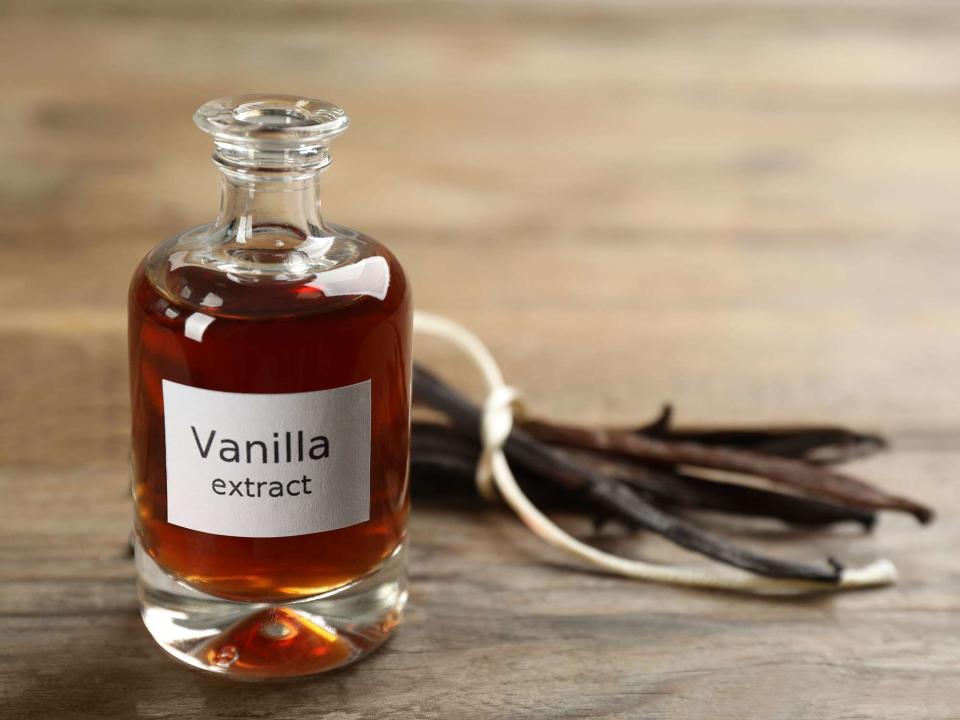Vanilla Paste vs. Vanilla Extract: What's the Difference?
Vanilla is a key flavor in every baker's arsenal; here's how to use it in two of its most popular forms.

Liudmila Chernetska/Getty Images
Vanilla has the reputation of being boring or bland, but nothing could be farther from the truth. If you've ever tried something baked with high-quality vanilla, you know the heavenly, borderline intoxicating flavor and aroma that vanilla can produce. It's featured in almost every sweet recipe, like the salt of the baking world, enhancing the flavor of nearly everything it's paired with. But not all sources of vanilla are created equal; here's how to pick the right one.
What Is Vanilla Extract?
Vanilla extract is made by steeping whole vanilla pods in an alcohol solution. Think of it like a super concentrated vanilla tea. The alcohol absorbs all of the flavorful and aromatic compounds in the vanilla pods without breaking them down or blending them.
Because vanilla extract contains no physical vanilla, the flavor is slightly lighter and less robust than vanilla paste. Extract is well suited to recipes where you want a clean appearance with no specs of vanilla. It's also the best at playing with others, perfect in recipes where vanilla is meant to be a supporting character rather than starring as the primary flavor.
What Is Vanilla Paste?
Vanilla paste includes ground vanilla pods and beans, often blended with extract and mixed with thickeners to create a paste. The key difference here is that vanilla paste includes flecks of vanilla bean because it uses the whole pod. This paste often has a more potent vanilla taste and requires less to achieve that signature pop of flavor. Vanilla paste is a great choice when you want to see little dots of vanilla bean, and vanilla is the primary flavor you want to emphasize, without the extra cost and hassle of using whole vanilla bean pods.
Related:Vanilla vs. French Vanilla: What’s the Difference?
Because of its intense flavor payoff, vanilla paste is best suited to being the star of the show; mixing it with other strong flavors can make the vanilla taste muddled. This is unfortunate given the flavor of the vanilla paste is superb, and it comes with a higher price tag than extract. Another important thing to note is that, unlike vanilla extract, vanilla paste has a relatively short shelf life. If you're an avid baker, you'll likely use it up well before the expiration date. If you're a more casual user, consider buying a smaller jar and keep an eye on the expiration date.
How to Use Vanilla Paste and Vanilla Extract
Most of the time, it's fine to use vanilla paste and vanilla extract interchangeably. Just know that the results of your bake might not quite line up with the recipe. This is especially true if the recipe calls for vanilla paste and you only have a low-quality vanilla extract or imitation vanilla extract on hand. The flavor payoff won't be as potent, and you'll lose that deep, robust note that vanilla paste brings to the party. Similarly, if a recipe calls for vanilla extract and you plan to swap in paste, be prepared for a heavy smack of vanilla flavor that could overpower other, more delicate flavors.
Related:5 Ingredients You Can Substitute for Vanilla Extract
Vanilla extract follows a more standardized recipe; the amount of vanilla flavor per volume is about the same across the board. In contrast, vanilla paste can vary wildly in intensity and concentration. Most jars of vanilla paste will have a guideline for swapping vanilla paste and extract. If not, use a bit less paste than a recipe calls for in extract or a bit more extract when a recipe calls for paste. They are roughly equivalent, so it's not a big deal to end up adding a little more or a little less.

